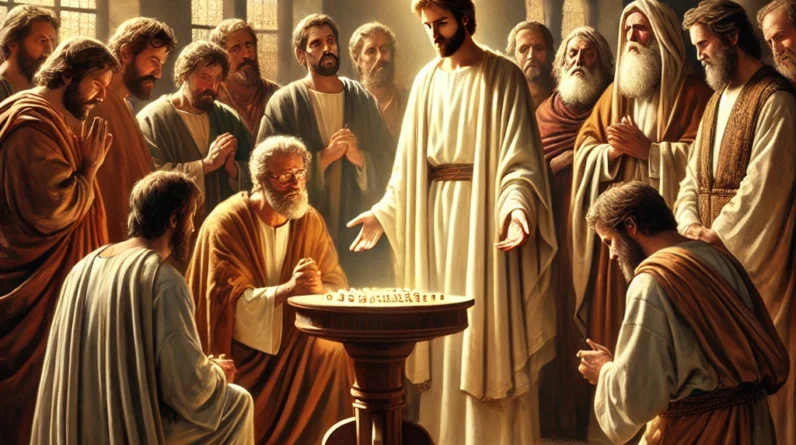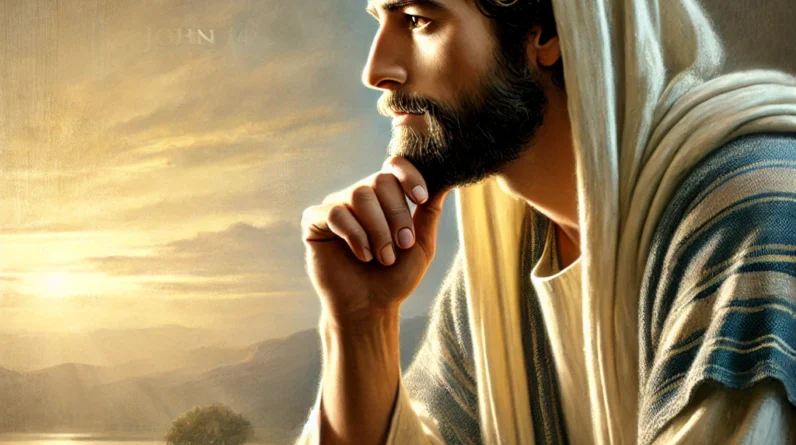Explore the journey of Apostle Thomas from doubt to faith in John 20:27. Discover how skepticism transforms into profound belief in this compelling narrative.
Thomas: From Doubt to Faith in John 20:27
If someone asked you to define faith, how might you respond? It’s often an abstract concept, something we feel or think we understand. But when faced with unexpected challenges or events, especially in matters spiritual, faith becomes a tangible test of one’s beliefs and convictions. Let’s explore this journey of faith through the life of a lesser-discussed apostle, Thomas—an apostle whose story traverses from skepticism to profound faith.
Who Was Thomas?
Thomas is one of those figures who, while not frequently highlighted in most Bible stories like Peter or John, left a remarkable imprint through a singular act of genuine human emotion and transformation. His name is Thomas, which means “twin” in Aramaic. Curiously, he is also known as Didymus, which is the Greek translation of his name, again meaning “twin.”
Before joining Jesus, little is documented about Thomas’s life, unlike other disciples who were fishermen, tax collectors, or zealots. Perhaps, it’s his relative obscurity that makes his story even more relatable—an everyman among extraordinary men. In John 11:16, Thomas is first introduced, portrayed as a loyal yet somewhat sarcastic figure. When Jesus decides to go to Lazarus, Thomas remarks to his fellow disciples, “Let us also go, that we may die with him,” displaying both a mixed attitude of bravery and skepticism John 11:16.
Calling to Discipleship
The Gospel accounts don’t provide an explicit narrative of how Jesus called Thomas. Unlike Peter, who was called away from his fishing nets, or Matthew, who left his tax booth, we meet Thomas already part of the group. His initial absence in the narrative allows for intrigue, leaving the imagination free to wander about what his first encounter with Jesus might have been like. Did he question? Did he quietly observe? One reasonable inference is found in the various accounts when Jesus called others, like Matthew 4:19-20, which demonstrates immediate commitment—something we see Thomas embody later.
Notable Events and Actions
When thinking of Thomas, the mind often drifts to one notable event characterized by doubt—the time post-resurrection when Jesus appears to the disciples. However, Thomas wasn’t with them at first, missing Jesus’ initial appearance. Doubt consumed him when the others proclaimed Jesus was alive. He famously declared he wouldn’t believe until he could see and touch Jesus’ wounds himself John 20:25.
Yet, in those doubts, we see a man grounded in honest truth-seeking. His skepticism was not dismissal but a yearning for confirmation—a common human experience. His story reaches its pinnacle in John 20:27 when Jesus appears again, inviting Thomas to touch his wounds. Thomas responds with a profound declaration of faith: “My Lord and my God!”

Their Role in the Early Church
Despite being best known for that moment of doubt, Thomas emerged as a pivotal element of the burgeoning early church. Tradition holds that he traveled beyond the Roman Empire, venturing to India, where he spread the Gospel. The community of Saint Thomas Christians in India credits him as their founder, a testament to his evangelistic spirit and enduring impact.
Acts of the Apostles, though not explicitly mentioning Thomas’ reach to India, clearly outlines the disciples’ courage and zeal post-resurrection and Pentecost in Acts 1:13. His mission represents the reach and transformative power of faith—drawing new peoples and lands under its light.
How Did Thomas Die?
Church tradition and various apocryphal texts suggest Thomas was martyred in India. His death, like much of his life, remains shrouded in mystery, with differing accounts of his martyrdom through a lance. The significance of his death mirrors the often unforgiving reality of early Christian evangelism, where staking a faith claim sometimes demanded the ultimate price. Through his martyrdom, Thomas illustrates the intersection of doubt transformed into unwavering commitment.
Lessons We Can Learn from Thomas
Thomas’ journey from doubt to faith is an exemplary story for anyone grappling with their spiritual journeys. First, it’s a reminder that doubt isn’t the enemy of faith; it’s part of the journey. Here, inquisitiveness leads to deeper understanding and eventually an anchored faith. Secondly, the role emotion plays—be it fear, concern, or doubt—in shaping belief cannot be underestimated.
A crucial takeaway is that faith isn’t about blind acceptance; rather, it involves an engagement of body, mind, and spirit—as Thomas shows in John 20:27. As modern believers, we can grapple with spiritual uncertainties, striving towards a more profound, irrefutable relationship with the divine.
Conclusion
Thomas, much like you and I, started from a point of skepticism, moving towards understanding and faith. His journey is not just an anecdote of ancient doubt but a deeply human story that holds relevance today. As we traverse our spiritual paths, may we remember Thomas and ask ourselves: How do we encounter doubts on our journey, and what steps do we take to transform them into unwavering faith?
Acknowledgment: All Bible verses referenced in this article were accessed via Bible Gateway (or Bible Hub).







